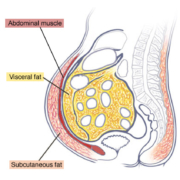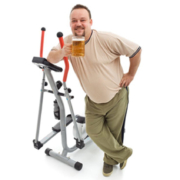Does Exercise Intensity Affect Obesity?
As I wrote on Thursday, exercise intensity did not seem to impact mortality, or death rate, in a large group of older women. Of course, living longer is important to many people. Could exercise intensity provide benefits as it relates to reducing the staggering 40% rate of obesity in the U.S.? Maybe. Let’s look at a recent study from Taiwan.
The Taiwan Biobank Study is a longitudinal study that recruits Han Chinese subjects 30 to 70 years old. Much like the All of Us study, researchers take anthropometric data such as height and weight as well as blood samples for multiple DNA analyses. They also collected data on physical activity; their objective for this part of the study was to see if exercise and the intensity of exercise impacted genetic manifestations of obesity.
Genes and Obesity
What manifestations? Body mass index, percent body fat, and waist circumference among others. Researchers asked the subjects what type of exercise they did, how long they exercised, and how many times per month they exercised. Then they calculated a BMI Genetic Risk Score (BMIGRS) based on the genetic markers for five obesity-related gene combinations. This was complicated; you know I like to see raw data, but with over 16,000 subjects and all of the compounding variables, that’s not realistic.
When they divided the subjects into quartiles based on BMIGRS, they found that the exercise with the greatest impact on the obesity-related genes was jogging. That was followed closely by mountain climbing, walking, exercise walking, international standard dancing (the kind of ballroom dance you learn at a studio or see on Dancing With the Stars), and a longer practice of yoga. Those activities had an impact on the expression of the genes related to obesity. It means that it down-regulated those genes, which means that if you jog, your BMI is lower, you have a lower percent body fat, and your waist circumference will be smaller.
Do you have to jog? No. All the listed exercises had an impact on the obesity genes so if you can’t jog, that’s fine. Extended yoga and dance were also on that list, and they don’t have the impact on joints that jogging or even mountain walking would have.
There were also some other interesting findings. Joggers exercised less time, about 30 minutes, and fewer days per month, about every other day. Walkers walked nearly an hour at a time and walked two out of three days.
The Bottom Line
One thing was clear: every type of exercise was better than no exercise. I’ve said many times before that exercise by itself is not a great way to lose weight because you have to invest so much time in it to have an impact, and no matter what exercise you choose, you still have to eat less. But if you want an advantage that will impact any obesity genes you have, higher intensity exercise is better. You have to adjust for orthopedic and any other issues, but the more intense the exercise, the better the results. If you’re going to walk 10,000 steps per day, walk them like you mean it.
What are you prepared to do today?
Dr. Chet
PLOS Genetics | https://doi.org/10.1371/journal.pgen.1008277.









